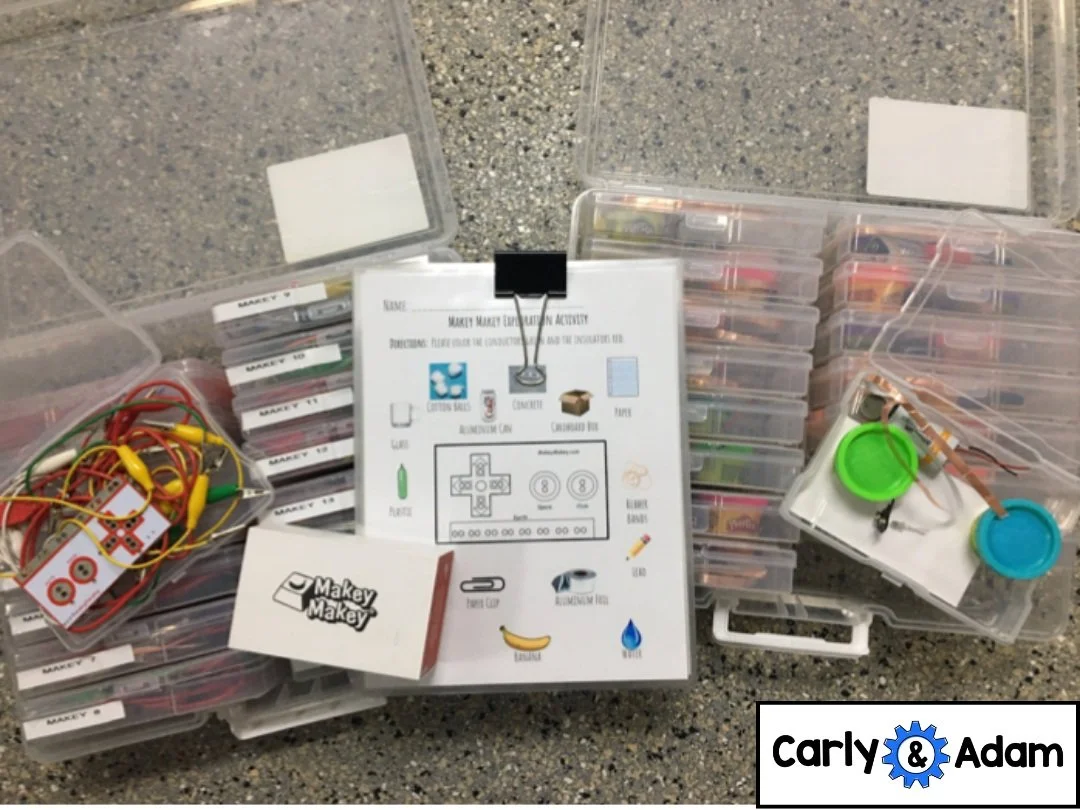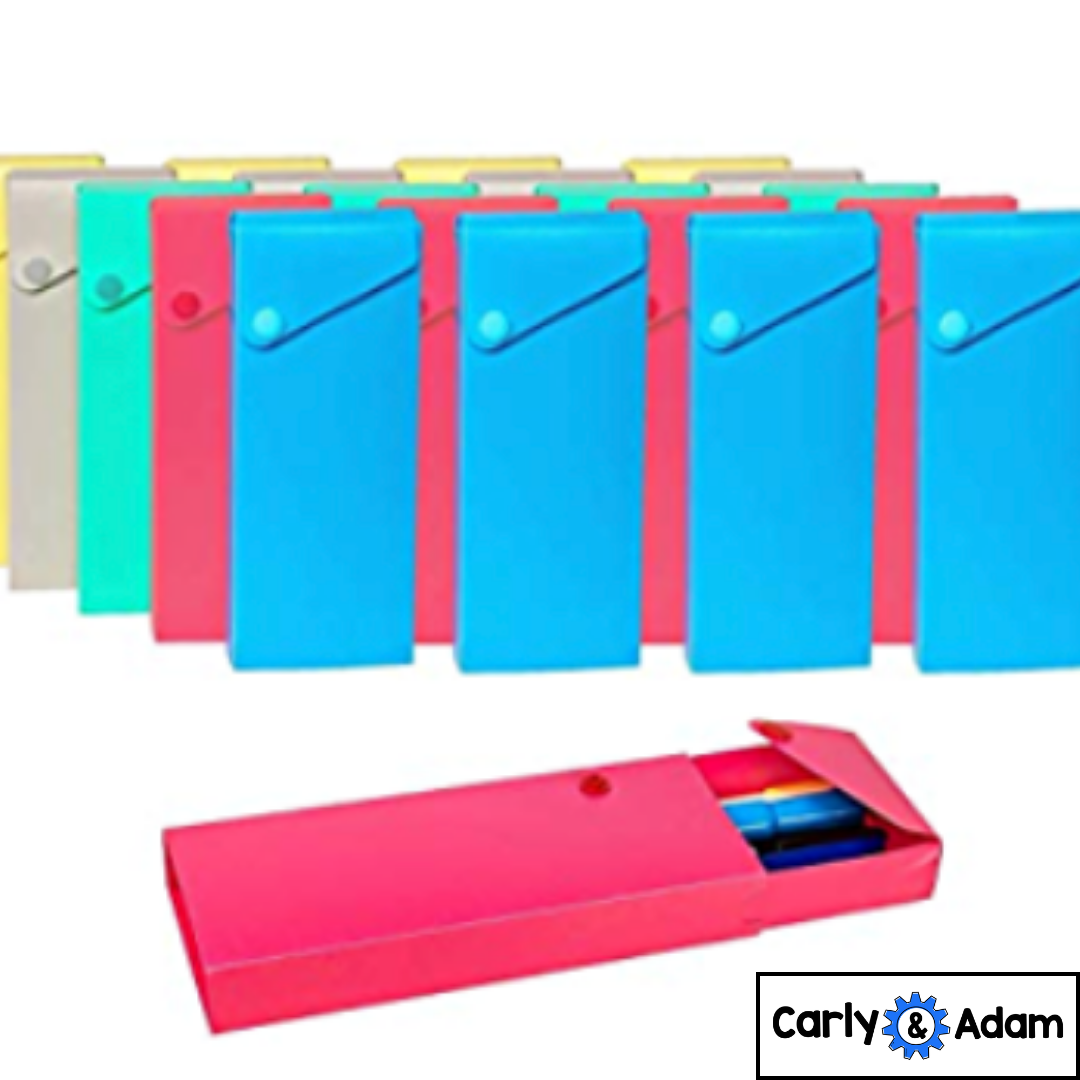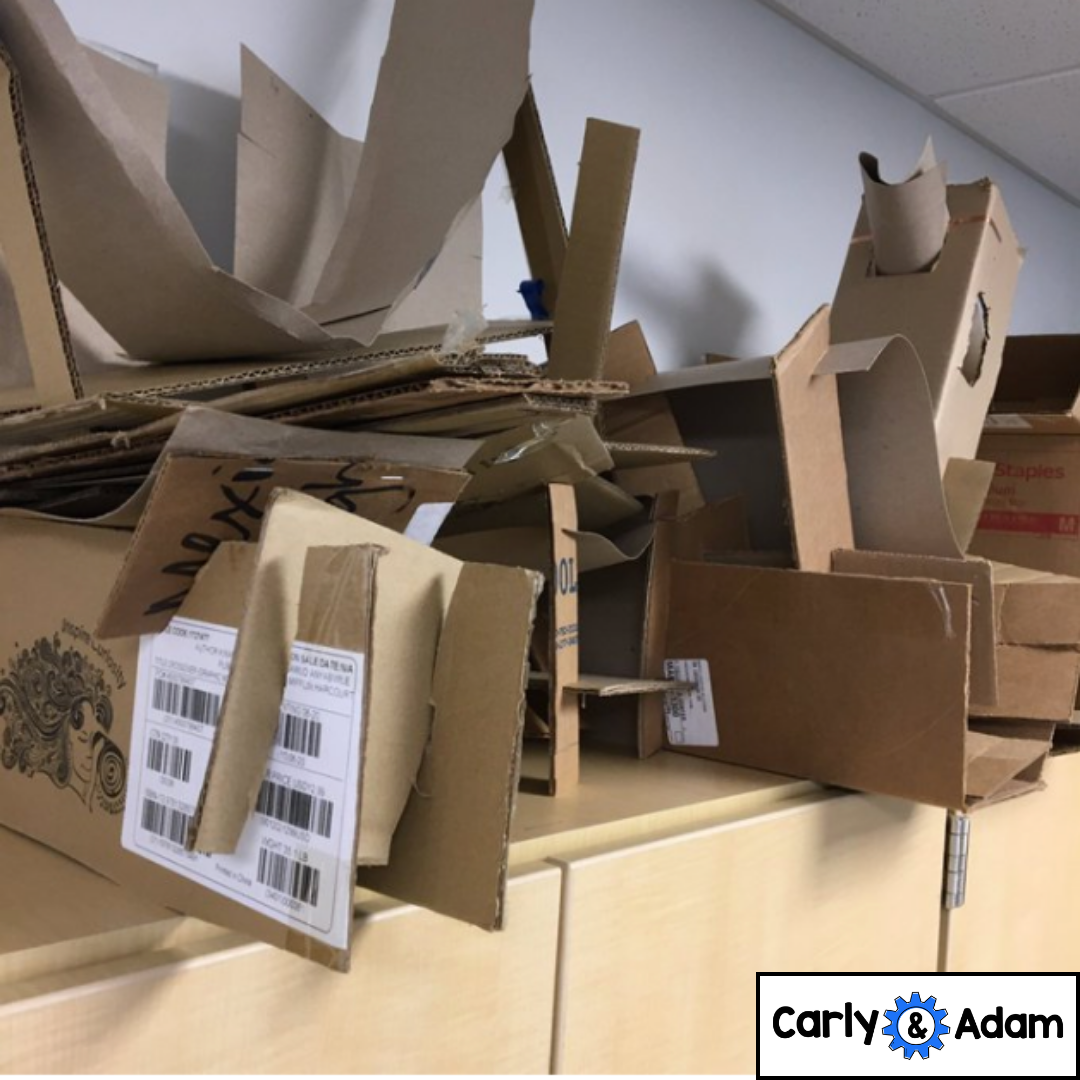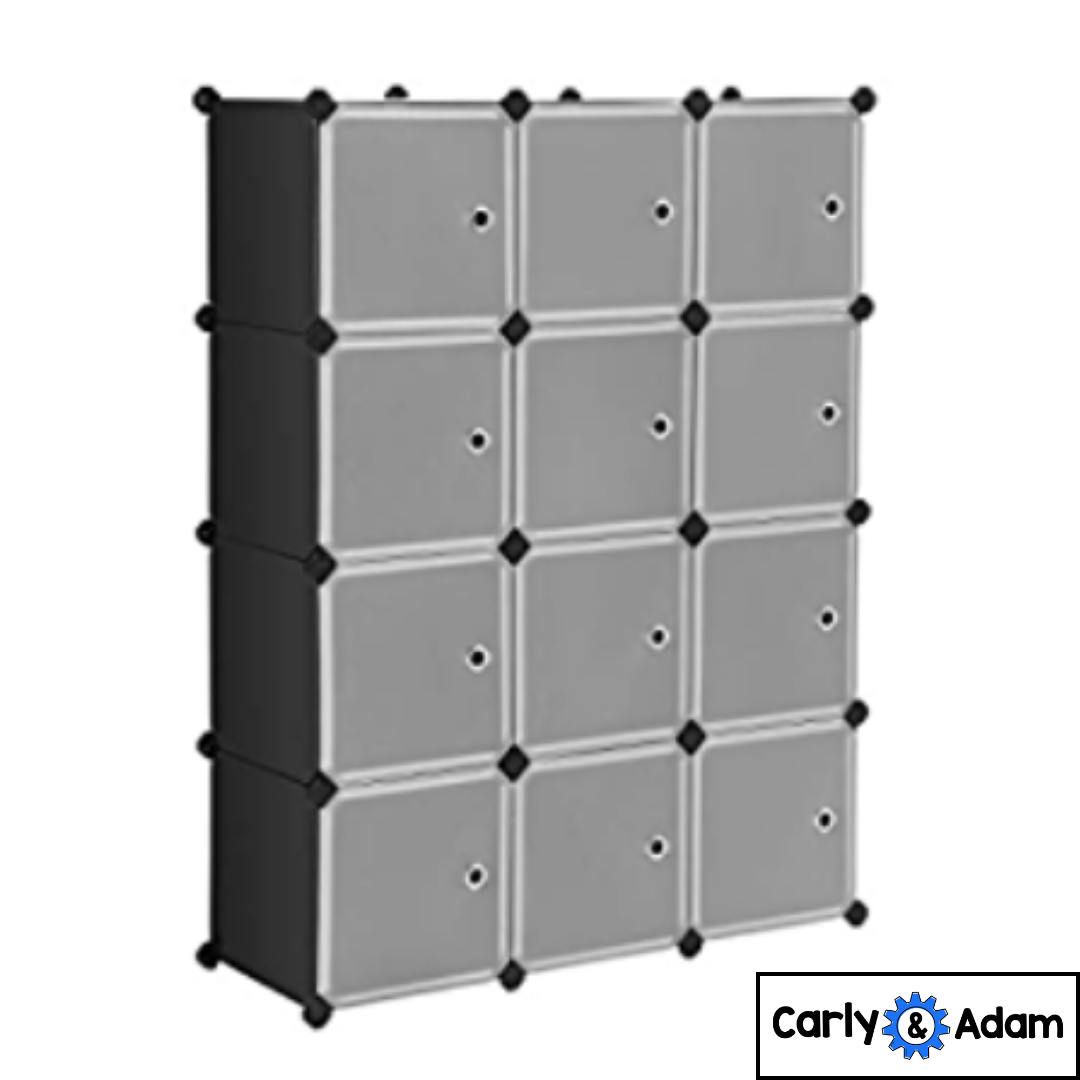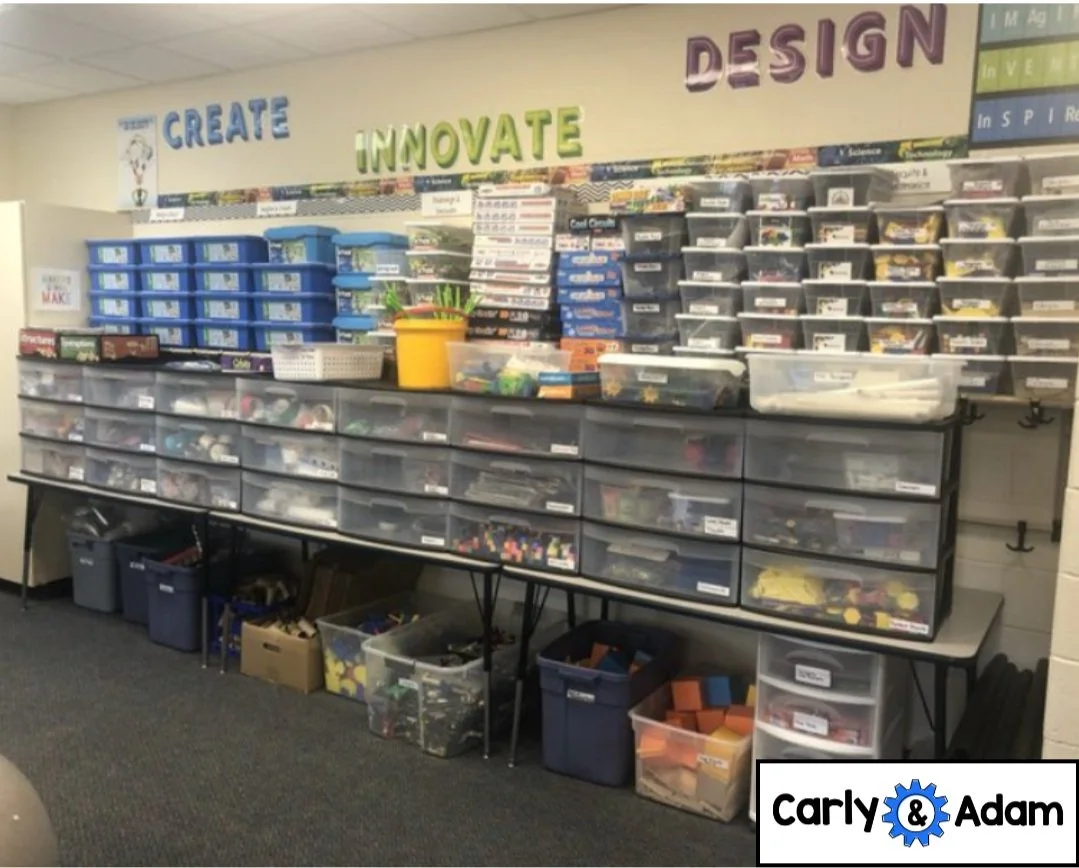The Best STEM Storage Hacks for Your Classroom
The following is a guest post from Dr. Jacie Maslyk.
STEM teachers know that one of the most important tools in the STEM/Maker space isn’t a tool at all—it’s having solutions for storage. Some teachers are blessed with large closets or classrooms with built-in cabinets, but others need to think creatively about how to store all the materials within your space.
Whether your STEM Program focuses on robotics or engineering and design projects, we reached out to educators in the field to get their best storage hacks.
Organizing your Tech Supplies
Your learning space may need to house a variety of tech tools, including student devices like iPads and chrome books or robotics kits. Maybe you have small electronic components that need to be stored. Finding the right solution can be a challenge.
Christine Dixon (@christinekdixon on Twitter and @makedesigninnovate on Instagram) shares some awesome solutions. Clear plastic cases (sometimes you can grab them at the dollar store) are great for storing Makey Makeys or small circuitry kits with wires, clips, and coin cell batteries.
In our Facebook group, Lori Granite shared an image of her “Dash hotel” using plastic crates to store her robots. Similar storage structures work well for Vex robotics bins or Lego We-Do sets. Grab plastic bins of all shapes and sizes at the dollar store or check out a summer yard sale.
Organizing Recyclables and Donated items
It is wonderful when you can connect parents and community members to your STEM projects. When they know what projects you are working on, they often want to support the learning by making donations.
I will never forget the morning as a building principal when a parent reached out to me to let me know that her family was getting all new appliances delivered that day and she wasn’t sure what to do with all the boxes. Our students had been going crazy for all sorts of cardboard creations and she knew that I would be willing to take those boxes off her hands. It is a whole another story though when giant refrigerator and stove boxes are now in the middle of your STEAM classroom with nowhere to go.
Where do you put all that cardboard?
Finding a place to organize and store cardboard is a necessity for STEM or Maker educators. A metal rack (like the one below) can hold cardboard boxes, big and small. Don’t have the funds to purchase it? Reach out to your district’s technical education department (woodshop) or your local career and technology center and ask them if they’d be willing to make one for you!
Super STEM teacher Chris Woods suggests a cabinet like the one in his classroom. With space for flattened boxes and storage for cardboard rolls or cartons, this corner is a smart way to collect all things cardboard.
Storing Projects in Process
Finding ways to store ongoing projects is definitely a challenge for STEM/Maker teachers. Sometimes STEM projects are completed within a lesson or two, but other times, what the students are engineering may take weeks to finish. What do we do with those projects while students are designing and prototyping?
Christine Dixon uses large banker boxes to store projects that her student teams are prototyping. Empty copy paper boxes also work great for this. Put a lid on them and stack them out of the way until the team is ready to continue working. Chris Woods suggests finding an empty or unused space, like above the cabinets (pictured below). Projects in process can stay out of the way while other students use your space.
Chris Woods
Paige Besthoff (@pcteachershs on Twitter) shared this storage solution for STEM projects that are in process. Cube storage like the one below (from Amazon) can provide an organized space for students to keep projects safe over time. Paige even shared that her PTA purchased two for her classroom! Tap into organizations in your school community to see how they might be willing to support STEM learning in your school.
Create Easy Access to STEM Materials
Within our STEM spaces, there are materials and resources that we want our students to have access to all of the time. Items like scissors, paper, glue, and tape need to be stored in places that students can grab quickly and use for a variety of projects.
In Tracy Kalud’s math makerspace, she has bins galore! Clear bins with labels and drawers that open allow students to get the materials that they need. From counters and blocks to calculators and protractors, this wall of storage is a great way to keep everything organized in her space.
Tracy Zalud
Not all organizational solutions include physical bins or cabinets. Kevin White (@KevinWhiteSD on Twitter) uses a stickers and spreadsheet system to manage his materials. He shared:
In the process of cleaning out 30+ years of clutter in the giant lab that I took over. I started by labeling columns of storage in a spreadsheet A-Z and adding a corresponding sticker, then numbering the rows for each letter 1-6 (depending on size). Now CTRL+F to find anything!
Digital organization solutions are perfect for tech-savvy teachers who need to locate all of their STEM materials in a quick way!
Getting Started with STEM!
You don’t need a huge budget to get started with STEM or making. You don’t need a huge space either. While those things are helpful, you can engage students in meaningful learning with just a few items in your classroom. I love this advice from Chris Woods:
I believe every teacher has "space" for a makerspace…
Start with a bin.
Start with a shelf.
Start with a cabinet.
But just start with somewhere to put materials kids can make with!
Have more questions or need additional resources?
Download our Free STEM challenges from our Free STEM Resource Library.
Join our Free Facebook Group.
For more STEM ideas, inspiration, and collaboration with other STEM teachers be sure to join our FREE Facebook group Elementary STEM Teachers with Carly and Adam!
We hope you have found this blog post helpful. To stay connected with Carly and Adam's teaching tips and classroom freebies be sure to follow us on Facebook, Pinterest, Teachers Pay Teachers, and subscribe to our blog!
An educator for the last 23 years, Dr. Jacie Maslyk, has served as a classroom teacher, reading specialist, elementary principal, and assistant superintendent. She is the author of STEAM Makers: Fostering Creativity and Innovation in the Elementary Classroom, Connect to Lead: Power Up Your Learning Network to Move Your School Forward (ISTE), Remaking Literacy: Innovative Instructional Strategies for Maker Learning and Unlock Creativity: Opening a World of Imagination With Your Students. You can read more on her blog, Creativity in the Making, at www.jaciemaslyk.blogspot.com. Connect with Jacie on Twitter @DrJacieMaslyk or email her at jaciemaslyk@gmail.com .
“Whatever it is, the way you tell your story online can make all the difference.”

